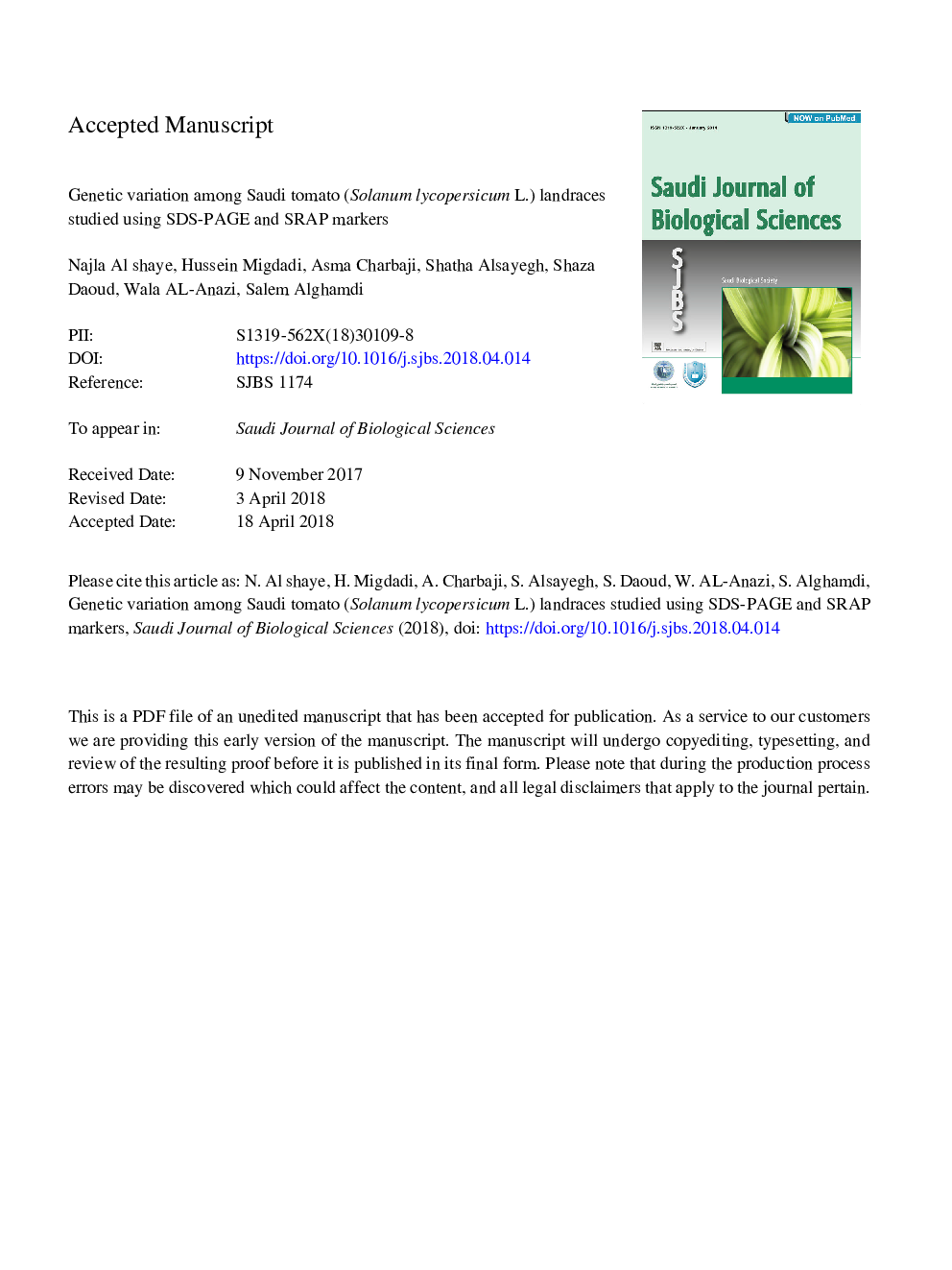| Article ID | Journal | Published Year | Pages | File Type |
|---|---|---|---|---|
| 8959260 | Saudi Journal of Biological Sciences | 2018 | 29 Pages |
Abstract
Genetic diversity among seven Saudi tomato landraces collected from different regions of the country was assessed using SDS-PAGE and molecular (sequence-related amplified polymorphism- SRAP) markers. A total of 19 alternative protein bands with different mobility rates were identified within a molecular weight range of 9.584-225â¯KDa, with 53% polymorphism. Specific protein bands were observed in the “Hail 548” and “Qatif 565” landraces. Genetic similarity based on Jaccard's coefficient ranged from 0.53 to 1.00, with an average of 0.72. For molecular evaluation, 143 amplicons (fragments) were generated using 27 SRAP primer pair combinations, of which 88 were polymorphic across all the landraces. The PIC values ranged from 0.46 to 0.90, with an average of 0.76. All landraces showed an average of 0.66 similarity coefficient value. The UPGMA dendrogram supported by principal coordinate analysis (PCoA) revealed clusters of the landraces that almost corresponded to their geographical origin. Thus, seed storage protein profiling based on SDS-PAGE and SRAP markers can efficiently be used to assess genetic variability among tomato germplasms. The information obtained in the analysis will be of great interest in the management of ex situ collections for utilization in breeding programs or for direct use in quality markets.
Related Topics
Life Sciences
Environmental Science
Ecology
Authors
Najla Al Shaye, Hussein Migdadi, Asma Charbaji, Shatha Alsayegh, Shaza Daoud, Wala AL-Anazi, Salem Alghamdi,
